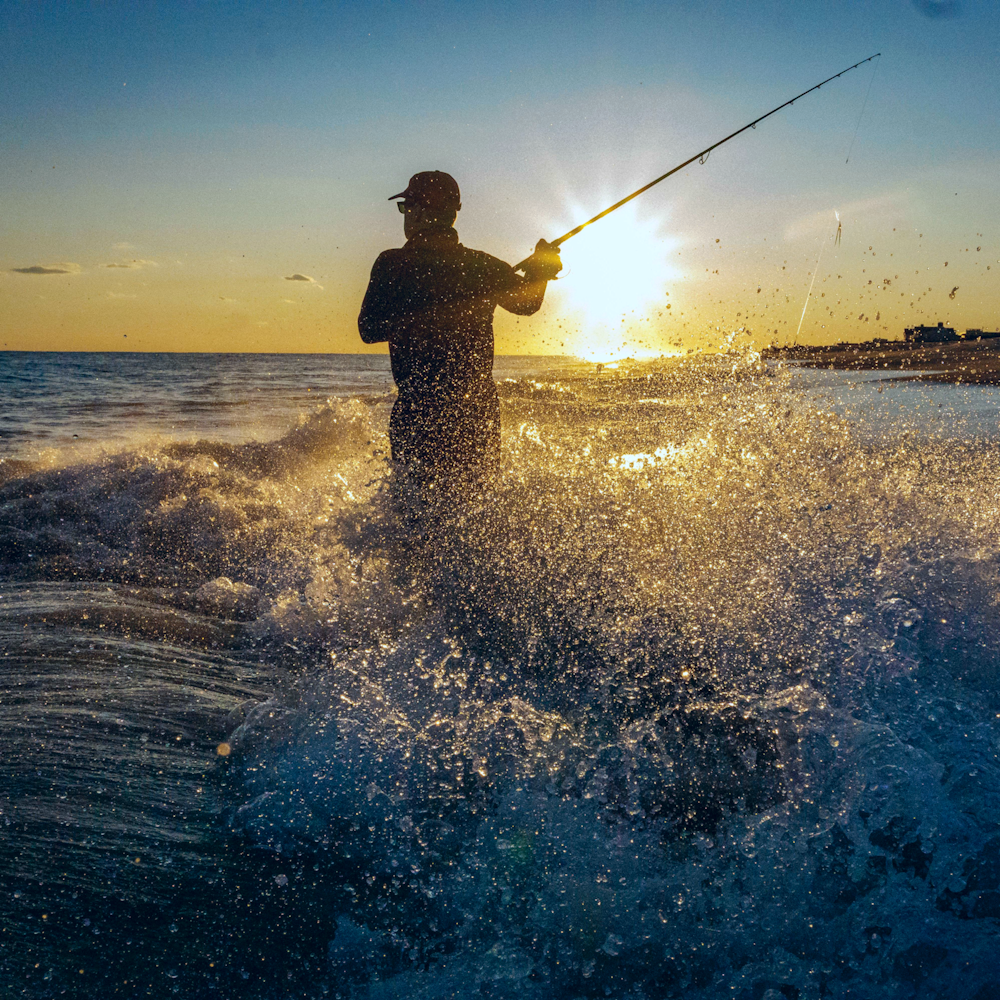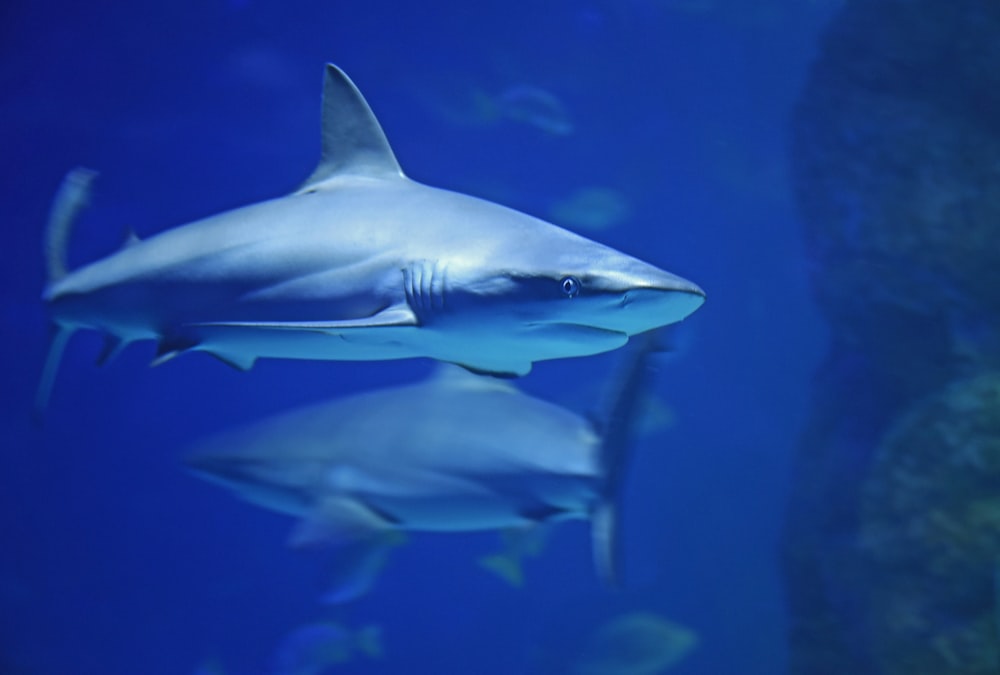To ensure a brighter future for sharks and their habitats, efforts must focus on habitat protection through initiatives like MPAs, sustainable fisheries practices, addressing climate change impacts, and enhancing research and collaboration efforts.
Sharks, the enigmatic rulers of the deep blue, evoke both fear and fascination in us.
Have you ever wondered where these majestic creatures call home?
From the sunlit shallows to the mysterious depths, sharks inhabit a wide range of marine environments across the globe.
Exploring the diverse habitats where sharks thrive can offer us a glimpse into their world and deepen our understanding of these apex predators.
Join us as we dive into the depths of the ocean to uncover the answer to the intriguing question: where do sharks live?
Understanding Shark Habitats
The Importance of Water Temperature
Sharks are highly sensitive creatures when it comes to water temperature.
They inhabit oceans across the globe, selecting specific temperature ranges based on their species.
Some sharks prefer warmer waters, like the Great White Shark, commonly found in temperate seas.
In contrast, others, such as the Greenland Shark, thrive in colder environments, even venturing into icy Arctic waters.
This diverse temperature preference among shark species reflects their adaptability to a wide range of marine habitats.
Depths of the Ocean
Exploring the depths of the ocean reveals a vast world where sharks display remarkable adaptability.
From the surface waters down to the abyssal plains, sharks occupy various depth zones based on their feeding habits and physiological adaptations.
Species like the Blue Shark are known for patrolling the epipelagic zone, while deep-sea dwellers like the Goblin Shark navigate the dark, cold waters of the bathypelagic zone.
Sharks’ ability to inhabit different oceanic depths showcases their evolutionary success in conquering even the most extreme underwater environments.
Coral Reefs and Coastal Regions
Coral reefs and coastal regions represent crucial habitats for a multitude of shark species.
These diverse ecosystems provide nurseries, feeding grounds, and shelter for sharks, contributing to their ecological importance.
Species like the Nurse Shark frequent shallow, tropical waters near coral reefs, utilizing intricate structures for protection and hunting.
Coastal regions worldwide host a variety of sharks, including the iconic Hammerhead Shark, which patrols the coastlines in search of prey.
The significance of coral reefs and coastal areas in supporting shark populations underscores the interconnectedness of marine ecosystems and the vital role sharks play in maintaining marine biodiversity.
Different Shark Species and Their Preferred Habitats
The Great White Shark: Following Seal Populations
In our exploration of different shark species and their preferred habitats, we focus on the iconic Great White Shark.
This apex predator is known for its fascination with seal populations, particularly in regions where seals congregate in large numbers.
The Great White Shark’s preferred habitats often coincide with seal colonies, as these marine mammals serve as a primary food source for the sharks.
Whale Sharks: Gentle Giants of Warm Waters
Moving on to the gentle giants of the ocean, the Whale Sharks, we discover their preference for warm waters.
These majestic creatures are commonly found in tropical and subtropical seas, where temperatures are suitable for their survival.
Whale Sharks have a unique feeding behavior that involves filter-feeding on plankton and small fish, making nutrient-rich warm waters ideal habitats for them to thrive.
Hammerheads: Seeking Out Tropical Shores
Our journey into the habitats of different shark species now leads us to the Hammerheads, known for their distinctive hammer-shaped heads.
These sharks are commonly found in tropical and subtropical waters, particularly around coral reefs and inshore areas.
Hammerheads are known to seek out tropical shores, where they can hunt for a variety of prey and navigate the complex underwater structures of coral reefs.
Human Impacts on Shark Habitats
Overfishing and Its Consequences
Overfishing is a significant threat to shark populations worldwide.
We’ve witnessed a concerning trend where many shark species are being depleted at unsustainable rates due to overfishing.
Sharks are often caught incidentally in commercial fishing operations targeting other species, such as tuna.
This bycatch not only affects shark populations but also disrupts the delicate balance of marine ecosystems.
The relentless pursuit of sharks for their fins, meat, and other products has led to devastating consequences for these apex predators.
Habitat Loss and Pollution
Habitat loss and pollution are other critical factors impacting shark habitats.
We’ve seen a gradual degradation of essential shark habitats like coral reefs and coastal regions due to human activities such as coastal development, pollution, and climate change.
These disturbances not only directly impact the availability of suitable habitats for sharks but also affect their prey populations.
Pollution, including plastic debris and chemical contaminants, poses a serious threat to sharks through bioaccumulation in their tissues.
Protecting and preserving diverse marine habitats is essential to ensuring the survival of shark species in the face of growing environmental challenges.
Conservation Efforts to Protect Shark Habitats
Building on the importance of preserving shark habitats, we now explore specific conservation efforts aimed at safeguarding these critical environments.
Marine Protected Areas (MPAs)
Marine Protected Areas (MPAs) play a vital role in safeguarding shark habitats globally.
These designated areas provide a haven for various shark species by limiting human activities such as fishing and boating that can disturb their natural habitats.
Establishing and effectively managing MPAs, we can ensure the protection of key environments where sharks reside, allowing populations to thrive and contributing to overall marine biodiversity.
Shark-Friendly Fisheries and Sustainable Practices
Promoting shark-friendly fisheries and adopting sustainable practices are essential steps in protecting shark habitats.
By implementing regulations that reduce bycatch, enforce responsible fishing methods, and prohibit practices like shark finning, we can mitigate the negative impacts of fishing on shark populations and their habitats.
Sustainable fishing practices, such as using selective gear and implementing quotas, help maintain healthy shark populations while preserving the balance of marine ecosystems.
Incorporating these conservation strategies not only benefits shark species but also supports the preservation of diverse marine environments, ensuring a sustainable future for both sharks and the ecosystems they inhabit.
The Future of Sharks and Their Habitats
Continuing our exploration of shark habitats and the challenges they face, we now shift our focus to the future of sharks and their environments.
The conservation efforts discussed earlier are pivotal in shaping a sustainable future for these apex predators and the delicate ecosystems they inhabit.
Ensuring Habitat Protection and Restoration
As we look ahead, safeguarding shark habitats through initiatives like Marine Protected Areas (MPAs) becomes increasingly critical.
These designated zones play a vital role in preserving marine biodiversity by providing safe havens where sharks can thrive without human disturbances.
Promoting Sustainable Fisheries Practices
Another essential aspect of securing the future of sharks is the promotion of shark-friendly fisheries.
By implementing sustainable fishing practices and reducing bycatch, we can mitigate the impact of overfishing on shark populations and maintain the balance of marine ecosystems.
Addressing Climate Change Impacts
Climate change poses a significant threat to both sharks and their habitats.
Rising sea temperatures, ocean acidification, and changing ocean currents directly affect the distribution and abundance of shark species.
Mitigating these impacts through collective actions like reducing carbon emissions is paramount to ensuring a sustainable future for sharks.
Enhancing Research and Collaboration
Advancing research efforts to better understand shark behaviors, migration patterns, and habitat requirements is crucial for effective conservation.
Collaboration between stakeholders, scientists, and policymakers is essential to developing comprehensive conservation strategies that address the complex interplay of factors affecting shark populations.
By prioritizing habitat protection, promoting sustainable fisheries, addressing climate change challenges, and enhancing collaborative research efforts, we can work towards securing a brighter future for sharks and their habitats.
Our collective actions today will determine the resilience and sustainability of these iconic marine species for generations to come.
Frequently Asked Questions About Sharks
What are some human-induced threats to shark populations?
Human-induced threats to shark populations include overfishing, bycatch, and habitat loss due to activities like coastal development and climate change.
How can shark habitats be safeguarded?
Conservation measures like Marine Protected Areas (MPAs) and shark-friendly fisheries play a crucial role in safeguarding shark habitats and promoting sustainability.
What is the significance of marine ecosystems like coral reefs for sharks?
Marine ecosystems like coral reefs and coastal regions are significant for sharks as they serve as important habitats and sources of food for many shark species.
How can we ensure a brighter future for sharks and their habitats?
To ensure a brighter future for sharks and their habitats, efforts must focus on habitat protection through initiatives like MPAs, sustainable fisheries practices, addressing climate change impacts, and enhancing research and collaboration efforts.

